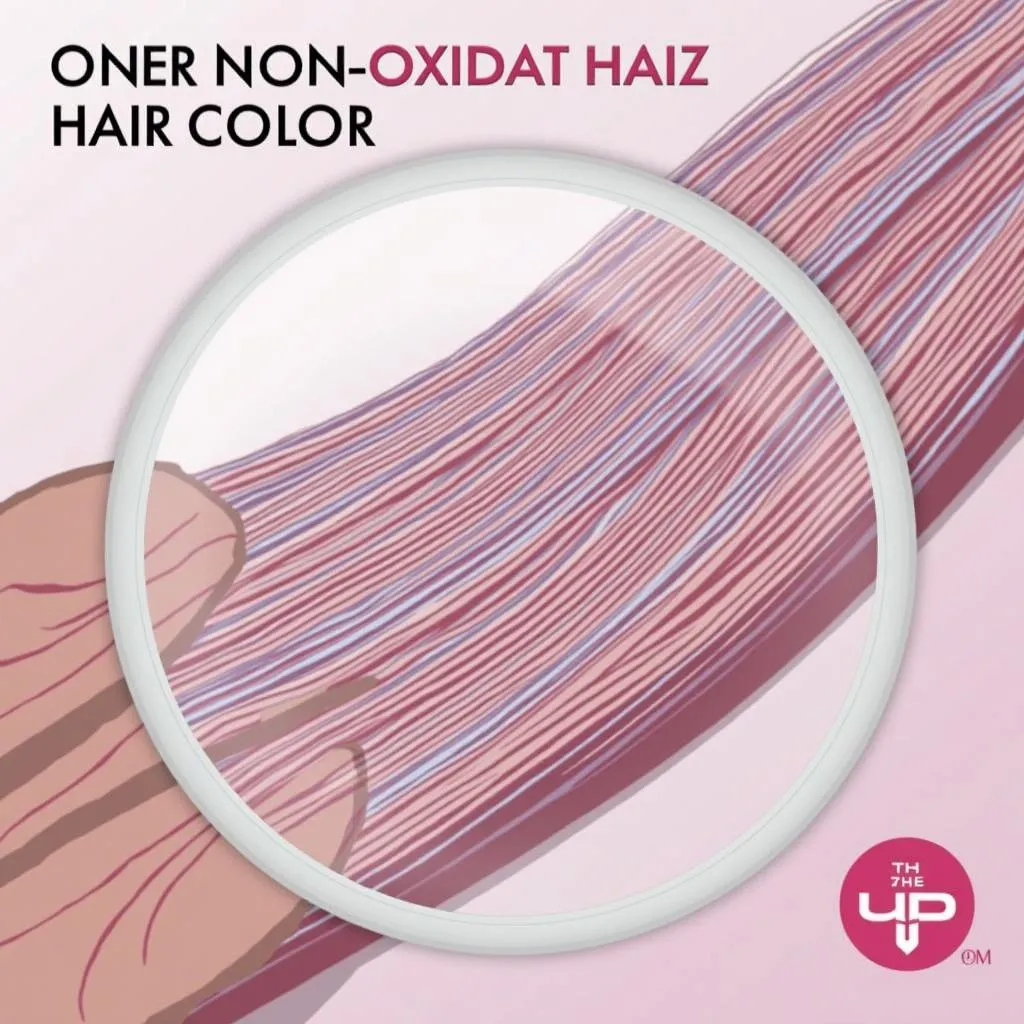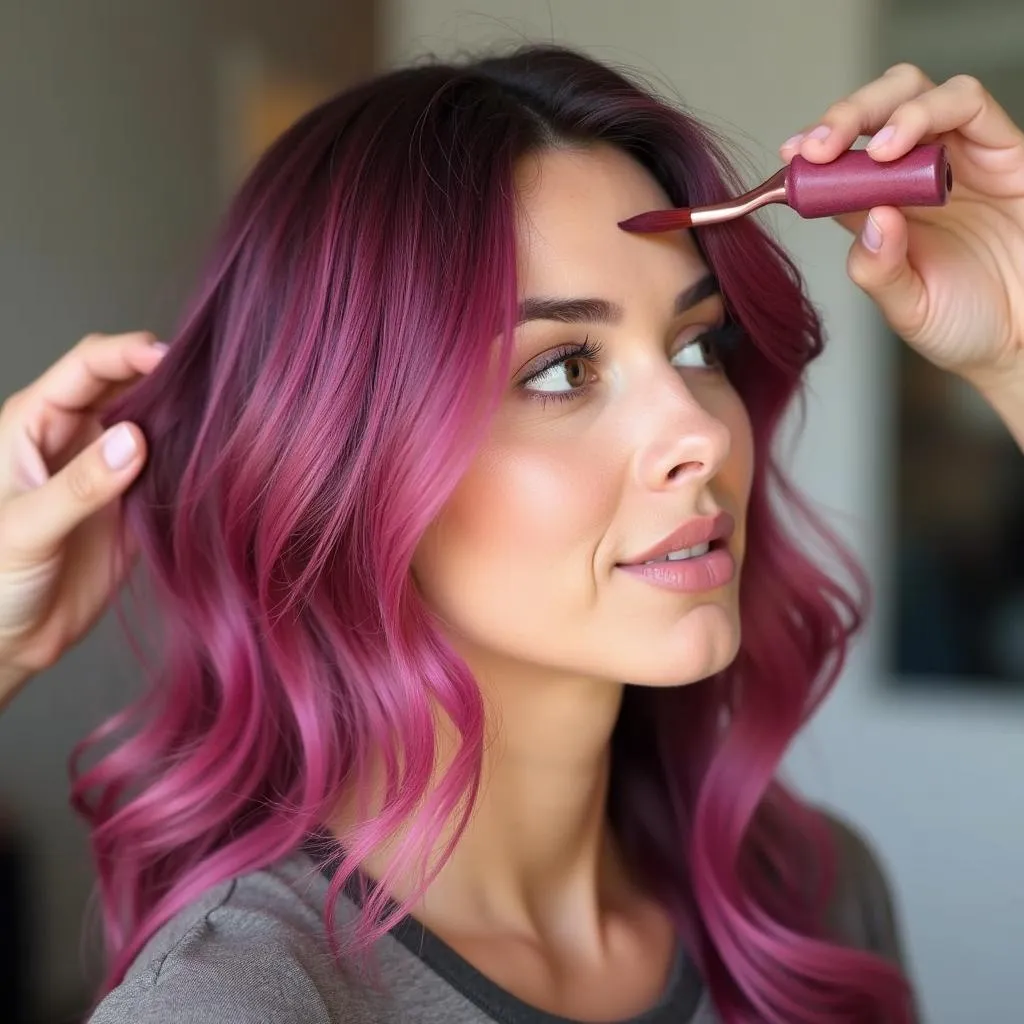Non-oxidative hair color: a phrase that piques the interest of many seeking a temporary and less damaging way to change their hair color. But what exactly does it mean? This article delves into the world of non-oxidative hair color, exploring its different types, benefits, and how it differs from its counterpart – oxidative hair color.
Understanding the Science Behind Hair Color
Before diving into the specifics of non-oxidative hair color, it’s helpful to understand the basic science behind how hair color works.
Hair color products generally fall into two categories:
- Oxidative hair color: These products contain both ammonia or an ammonia substitute and peroxide. They work by lifting the natural pigment of your hair and depositing new color molecules. Oxidative color provides long-lasting results and can lighten your natural hair color significantly.
- Non-oxidative hair color: These products, unlike their oxidative counterparts, do not penetrate the hair shaft to alter your natural pigment. Instead, they deposit color on the surface of the hair, creating a temporary color change.
 Hair strands with a non-oxidative color coating
Hair strands with a non-oxidative color coating
Delving into Non-Oxidative Hair Color Types
Non-oxidative hair color offers a gentler approach to changing your hair color, making it a popular choice for those seeking temporary transformations or wanting to experiment with different shades without the commitment. Let’s explore some of the most common types:
1. Temporary Hair Color
As the name suggests, temporary hair color offers the most short-lived color change, typically washing out after one or two washes. This type of hair color is often found in fun, vibrant shades and is a popular choice for special occasions or trying out a bold look.
Examples of temporary hair color:
- Hair mascara
- Colored hair spray
- Hair chalk
2. Semi-Permanent Hair Color
Semi-permanent hair color lasts longer than temporary color, gradually fading over several washes (usually 6 to 8 washes, but it can be up to 28). It’s a great option for enhancing your natural hair color, adding subtle highlights, or covering the first signs of gray hair.
Examples of semi-permanent hair color:
- Color-depositing conditioners
- Hair glosses
- Certain hair dyes marketed as “semi-permanent”
 Application of semi-permanent hair color
Application of semi-permanent hair color
Benefits of Choosing Non-Oxidative Hair Color
Non-oxidative hair color offers a range of advantages, making it an appealing option for many individuals:
- Less damaging: As it doesn’t alter the hair’s internal structure, it’s a gentler alternative to oxidative hair color, minimizing damage and breakage.
- Temporary and commitment-free: Ideal for trying out different colors or adding a temporary pop of color for special occasions.
- Wide range of shades: From natural-looking hues to vibrant, bold colors, there’s a non-oxidative option for everyone.
- Conditions hair: Many non-oxidative hair colors are formulated with conditioning agents, leaving your hair feeling soft and healthy.
Expert Insights
“Non-oxidative hair color is like makeup for your hair,” says renowned hair stylist, Emily Carter. “It allows you to experiment with different looks without the commitment of permanent color. It’s a fantastic tool for enhancing your natural hair color or trying something bold and playful.”
Making the Right Choice
The best type of hair color for you depends on your individual needs and desired results. If you’re unsure which option is right for you, consult with a professional hairstylist. They can assess your hair type, color goals, and recommend the most suitable products and techniques for achieving your desired look.
Remember, whether you opt for a dramatic transformation or a subtle enhancement, choosing the right hair color can boost your confidence and allow you to express your unique style.

